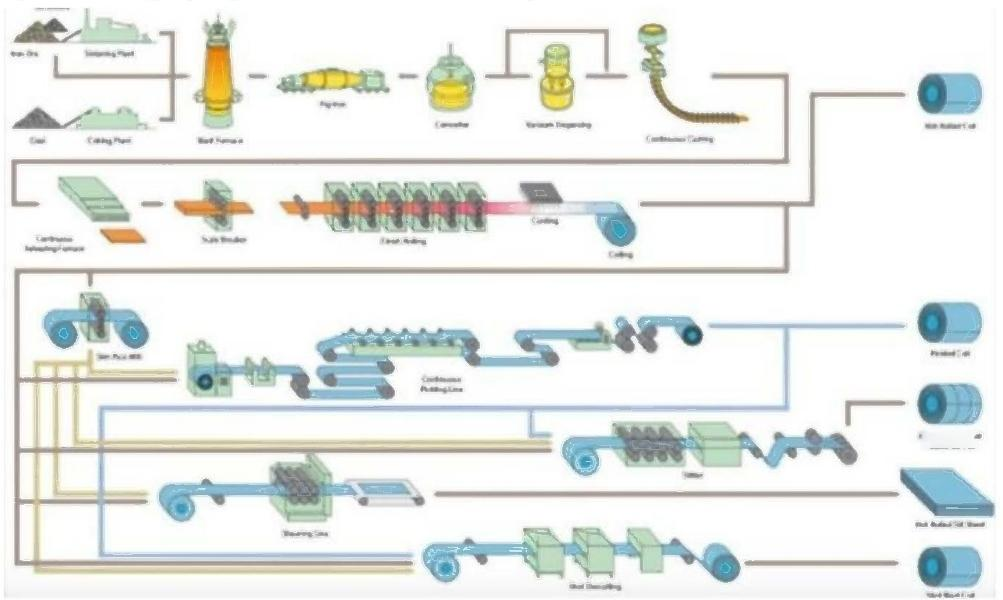1. Raw material production:
Collect stainless steel scrap,iron,nickel and chromium to manufacturing raw materials
2. Roughing Mill:
The stainless steel slab is then sent back and forth through the Roughing Mill to reduce its thickness and increase its length,without changing its width.
3. Finishing Mill:
Having acquired the shape of a sheet,it is now sent to further thinning in the Finishing Mill depending on customer'requirement.
4. Coiling:
These stainless steel slabs are now turned into plates (-20 mm thickness)or coils(-6 mm thickness)as per order after several intermediate processes.
5. Annealing:
The hot rolled(HR)coil undergoes a thermal process called annealing,in which the metal is given a consistent,uniform internal structure and homogeneous properties.This helps to improve the mechanical stability and corrosion-resistance of the coil
6. Pickling:
The stainless steel coil then goes through a chemical process,Pickling,in which mill scales,surface oxides,and annealing oxides are removed.
7. Quality Testing:
There is quality testing at each stage of production,where a sample is taken from the product,and sent to labs for physical and chemical examination.
8. HRAP/CRAP coils:
The resultant product is called Hot Rolled Annealed Pickled (HRAP)stainless steel coil which goes either directly to the customer,or to be made into.
9. (Customization:
CRAP coil goes through several production processes aimed at custom surface finish,thickness,product chemistry and mechanical properties.Different
kinds of stainless steel finishes such as CR,BA,and 2D/2B are produced during these processes.
10. Slitting:
The stainless steel coils in Cold Rolling Division are reduced to different widths as per the customer requirement.
11. SPD:
For specialized applications and products such as coin blanks,strips for razor blades,and precision strips up to 0.05 mm thickness,our Special Product Division produces highly sophisticated stainless steel products.



